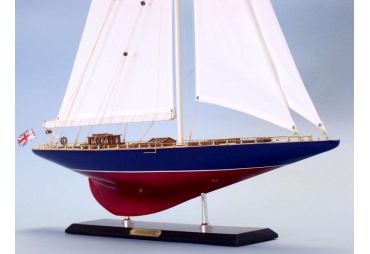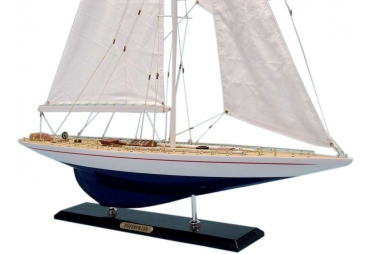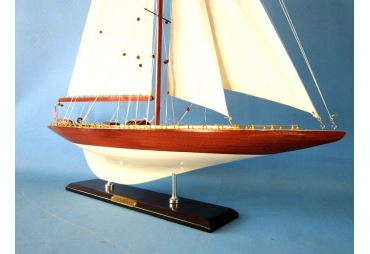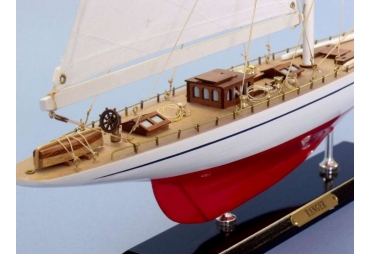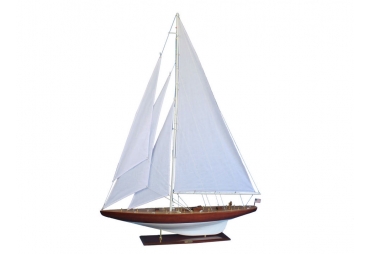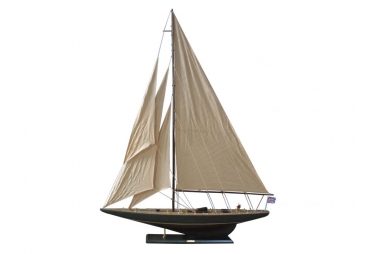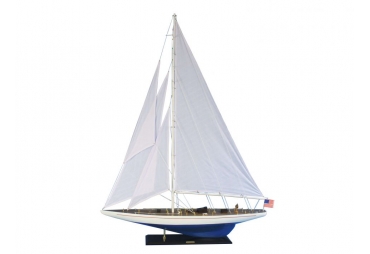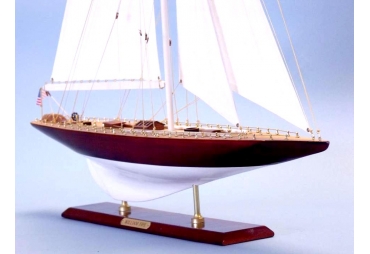Sailboats
-
Nautical Decor
- Fish Replica
- Nautical Art Posters
- Nautical Gifts And Decor
- Collections of Tether Cars, Nautical Clocks
- Decorative Lighthouses
- Corporate Gifts
- Liferings
- Nautical Throw Pillows
- Nautical Jewelry
- Nautical Theme Framed Art
- Beach Decor Shop
- Nautical & Coastal Furniture
- Portholes
- Aviation Decor and Gifts
- Nautical Clocks
- Floats and Buoys
- Nautical Balance Toys
- Compasses
- Lanterns and Lamps
- Globes
- Decorative Sailboats
- Signs
- Spot Lights
- Keychains
- Nautical Flags
- Nautical Watches
- Sextants
- Decorative Wooden Oars & Paddles
- Ships in a Bottle
- Decorative Anchors
- Ship Wheels
- Ships Bells
- Spy Glasses
- Telescopes
- J Class Yacht Decor
- Diving Helmets
- Nautical Charts
- Seaside Treasures
- Nautical Wall Decor
- Mirrors
- Curtains Tapestry
- Weather Instruments
-
Model Ships
- Historic Ships
- J Class Sailboats
- Large Tall Ships
- RC Sailboats
- Display Cases
- Famous Ships
- Coast Guard
- Historic Sailboats
- Cruise Ships
- Fishing Boats
- Exclusive Ship Models
- Pirate Ships
- Half Hull Boat Models
- Real Kayaks and Canoes
- Ships in the Bottles
- Speed Boats
- Tall Ships
- America's Cup Sailboat Models
- Sailboats
- Custom Built Models
- Fish Replica
- Nautical Lighting
- Furniture
-
 $185 $197
$185 $197Capiz Wall Mirror
OUT OF STOCK Overall: 32" H x 32" W x 1" D Overall Product Weight: 24lbs
Sailboats There are 122 products.
Subcategories
-
Bluenose 2
Bluenose was launched at Lunenburg, Nova Scotia on March 26, 1921, as both a working cod-fishing schooner and a racing ship. This was in response to a Nova Scotian ship's defeat in a race for working schooners established by the Halifax Herald newspaper in 1920. After a season fishing on the Grand Banks, Bluenose defeated the ship Elsie from Gloucester, Massachusetts, returning the trophy to Nova Scotia. During the next 17 years of racing no challenger, American or Canadian, could wrest the trophy from her.
-
1895 America's Cup...
Defender was the 1895 America's Cup defender.
DesignDefender was designed by Nathanael Greene Herreshoff and built by the Herreshoff Manufacturing Company in 1895. It was Herreshoff's second victorious America's Cup defender design.Defender was a sloop with all-metal construction: steel, aluminum, and manganese bronze. It was owned by William Kissam Vanderbilt, Edwin D. Morgan and C. Oliver Iselin, and skippered by Henry C. Haff.CareerDefender defeated the New York Yacht Club's Vigilant then went on to defend the cup against British keel cutter Valkyrie III. Following the contest, Defender was towed to New Rochelle where it remained for another four years without sailing. It was rebuilt to race trials against the 1899 America's Cup defense candidate, Columbia. Defender was broken up in 1901.Specifications* Overall length: 37.5m* Length at water line: 27.17m* Beam (width): 7.03m* Draft: 5.81m* Displacement: 151.5 tonnes* Sail area: 1134.3 m2 -
1899 America's Cup...
1899
J-Class
Great Britain
Yacht club: Royal Ulster Yacht Club, Ireland
Unsuccessful challenger for the 1899 America's Cup
Owner: Sir Thomas Lipton
Rating: 101.092 and102.565
Designer: William Fife III, Jr.
Builder: J. Thorneycroft & Co, at Millwall on the Thames near London, England
Sailmaker: Ratsey, Cowes
Year of building: 1897-98
Launched: June 24, 1899
Skipper: Captain Archibald "Archie" Hogarth and his assistant, Captain Robert "Bob" Wringe
Afterguard: Jesse Connell and Captain Ben Parker
Data
Construction: Composite metal
Frames: Steel
Hull below waterline: Manganese bronze plating
Topsides: Aluminum Alloy plating
Deck: Pine
Mast and boom: Steel welded
Dimensions
Length overall (LOA): 38.86m
Length waterline (LWL): 25.12m
Beam: 7.46m
Draft: 6.15m
Displacement: 156.9 tonnes
Tonnage: 135 tonnes
Sail area: 1214.30m2
Mast: 29.56m
Boom: 32.61m
Bowsprit: 8.60m
Topmast: 18.90m -
Sovereign
1964
Sail number: K 12International 12-metre rule sloopGreat BritainYacht club: Royal Thames Yacht Club, London, England.Unsuccessful challenger for the 1964 America's CupOwner: J. Anthony J. BoydenDesigner: David BoydTank test facilities: Stevens Institute at Hoboken, New Jersey, United StatesBuilder: Alexander Robertson and Sons, Ltd., at Sandbank, Holy Loch, ScotlandSailmakers: Bruce Banks, Ratsey and Lapthorn, Seahorse, Austin FararYear of building: 1962 - 1963Launched: June 6, 1963Home port: Greenock, ScotlandSkipper: Peter ScottAfterguard: Bruce B. Banks, Lieut. Comdr. Dan N. Brady as navigatorCrew: 11.DataConstruction: WoodDimensionsLength overall (LOA): 21.31mLength waterline (LWL): 14.02mBeam: 3.82 mDraft: 2.74 mSail area: 168.84m2Displacement: 27 tonnesMast: 25mYear of building 1963Launched 6/6/1963 -
Sailing Yacht Volunteer
Volunteer was the victorious American defender of the seventh America's Cup race in 1887 against Scottish challenger Thistle.
Design
Volunteer, a centerboard compromise sloop, was designed by Edward Burgess and built by Pusey & Jones Shipbuilding Company at Wilmington, Delaware in 1887 for owner General Charles J. Paine of the New York Yacht Club.
Volunteer had an all-steel frame and hull, with a deck of white pine.
Career
Volunteer easily beat the 1886 America's Cup defender Mayflower during the trials, and won both Cup races on September 27 and 30, 1887, against Thistle. It was skippered by Captain Hank Haff with the assistance of Captains Terry, Berry and L. Jeffreys.
Soon after the Cup races, Volunteer was bought by John Malcolm Forbes (who also owned Puritan) and was altered as a schooner in 1891. It was broken up at a New York junkyard in 1910.
Specifications
* Overall length: 32.91 m
* Length at water line: 26.10 m
* Beam (width): 7.06 m
* Draft: 3.04 m
* Displacement: 130 tons
* Sail area: 834.40m2 -
Decor Yachts
Nautical style decorating with sailboat models
-
Yacht Enterprise
In the midst of America’s financial crisis, in the late 1920s, a yacht was being designed that would emerge as the first of a new breed. Incorporating a sleek new style, and crafted using an assortment of lightweight metals, the Enterprise yacht would soon enter into the 14th America’s Cup Race. As the oldest international trophy competition in the world, the races allowed yacht clubs across the globe to compete for the chance to claim the title and bring the trophy home to their country. However, the previous race winning New York Yacht Club had been in possession of the trophy for 60 years, and was a favorite to defeat the challenging Royal Ulster Yacht Club.
-
Columbia
Columbia was the defender of the tenth America's Cup race in 1899 against British challenger Shamrock as well as the defender of the eleventh America's Cup race in 1901 against British challenger, Shamrock II. It was the first vessel to win the trophy twice in a row (a record not equalled until Intrepids back-to-back wins in 1967 and 1970.)
DesignColumbia, a fin keel sloop, was designed and built in 1898-9 by Nathanael Herreshoff and the Herreshoff Manufacturing Company for owners J. Pierpont Morgan and Edwin D. Morgan of the New York Yacht Club. It was the third winning defender built by Herreshoff.Columbia had a nickel steel frame, a tobin bronze hull, and a steel mast (later replaced with one of Oregon pine.)CareerColumbia, demasted, 1899. Photograph by John S. Johnston.Columbia was launched on June 10, 1899. It easily won the elimination trials against the rebuilt former defender, Defender. Skippered by Charlie Barr, it won all three races against the British defender, Shamrock in the 1899 America's Cup. Notably, Hope Goddard Iselin was the only female on the crew, serving as a afterguard.Columbia was selected again in 1901 to defend the Cup, and again under the command of Charlie Barr, won all three races against Shamrock II.In 1903 Columbia was refitted with the hope of being selected for a third time, but it was badly beaten in the selection trials by the yacht Reliance.Columbia was cut up for scrap in 1913 at City Island.Specifications* Overall length: 40.15 m* Length at water line: 27.25 m* Beam (width): 7.39 m* Draft: 5.97 m* Displacement: 148.7 tonnes* Sail area: 1189 m2 -
Bluenose
Lorem Ipsum is simply dummy text of the printing and typesetting industry. Lorem Ipsum has been the industrys standard dummy text ever since the 1500s, when an unknown printer took a galley of type and scrambled it to make a type specimen book. It has survived not only five centuries, but also the leap into electronic typesetting, remaining essentially unchanged. It was popularised in the 1960s with the release of Letraset sheets containing Lorem Ipsum passages, and more recently with desktop publishing software like Aldus PageMaker including versions of Lorem Ipsum.
-
America
The America’s Cup is the most prestigious regatta and Match Race in the sport of sailing, and the oldest active trophy in international sport, predating the Modern Olympics by 45 years. The sport attracts top sailors and yacht designers because of its long history and prestige as the “Holy Grail” of yachting. Although the most salient aspect of the regatta is its yacht races, it is also a test of boat design, sail design, fundraising, and management skills. The cup, originally offered as the Royal Yacht Squadron cup, is now named after the first yacht to win the trophy, the schooner America. The trophy remained in the hands of the New York Yacht Club of the United States from 1852 or 1857 (when the syndicate that won the Cup donated the trophy to the club) until 1983 when the Cup was won by the challenger, Australia II of Australia, ending the longest winning streak in the history of sport. The skipper of Australia II, John Bertrand, was quoted in saying, “This puts yacht racing back on the map!”.
-
Atlantic
Commissioned by New York Yacht Club member Wilson Marshall, the Atlantic was launched in 1903. William Gardner, one of America's foremost designers of large yachts, designed her. From the moment Atlantic went to sea, it was clear that she was an exceptionally fast and beautiful schooner. When a yacht in 1903 hits twenty knots during her sea trials, she is a promising yacht, but even then nobody could imagine two years later this yacht would set a record that would stand unmatched for almost a century
-
America's Cup Intrepid
America's Cup Challenger Yacht Model Intrepid
-
Endeavour
The J-class yachts are beloved symbols of extravagance from a bygone age, each designed and financed by a unique personality to compete in The America’s Cup. Looking back, we are left to wonder at the priorities of the people involved; how could they justify to themselves the expenditure required for a boat race during the height of the Great Depressionω Not to mention, these millionaires would rarely even leave themselves with a souvenir of this ultimate luxury; most J-class yachts were sold for scrap following the race. Today, we are left to marvel at the extraordinary series of events that was The America’s Cup from 1930-’37.
After the suspension of racing during World War II, its resumption in ‘58 featured smaller yachts, undoubtedly more affordable to field. This makes any surviving J-class yacht to be a rare, valuable historical artifact - exactly what the Endeavor is.
When it was constructed, The Endeavor was extraordinary for its design and technological innovation, and it remains so for being one of the only America’s Cup J-class yachts still intact.
-
Ranger
America's Cup J Class Yacht Ranger Model
The J-class yacht Ranger won the 1937 America's Cup, defeating 4-0 the Endeavour II of Britain, raced at Newport, Rhode Island. It would be the last time huge J-class yachts would race in the America's Cup.
-
Sloop Sailboats
Classic Sloop Sailboat Models
-
Shamrock
America's Cup Shamrock Yacht Model
-
America's Cup Endeavour Wooden Sailboat Model America's Cup Endeavour Wooden Sailboat Model
27" L x 4" W x 35" H (1:58 scale) 27" L x 4" W x 35" H (1:58 scale)
$279 -
America's Cup Enterprise 50" Limited America's Cup Enterprise 50" Limited
out of stock Dimensions: 50" H x 5" W x 34" L out of stock Dimensions: 50" H x 5"...
-
America's Cup Intrepid 35" Limited America's Cup Intrepid 35" Limited
SOLD OUT America's Cup Intrepid 35" Model Measurements: 35" High x 4" Wide x 27" Long (1:53 scale) SOLD OUT America's Cup Intrepid...
-
America's Cup Intrepid Sailboat Model 60" America's Cup Intrepid Sailboat Model 60"
Overall Dims: 43" L x 7" W x 60" H Overall Dims: 43" L x 7" W x 60" H
$399 -
America's Cup J Class Yacht Model Columbia... America's Cup J Class Yacht Model Columbia...
America's Cup J Class Yacht Model Columbia 37" Overall Size: 37" Length x 5" Width x 35.4" Height America's Cup J Class Yacht Model...
$185 -
America's Cup Lionheart Limited 35" Wooden... America's Cup Lionheart Limited 35" Wooden...
27" Long x 4" Wide x 35" Long 27" Long x 4" Wide x 35" Long
$179 -
America's Cup Ranger Limited 26" America's Cup Ranger Limited 26"
Dimensions: Height: 26 Width: 4” Length: 20” (1:81 scale) Dimensions: Height: 26 Width:...
$89 -
America's Cup Replica J Class Yacht Model... America's Cup Replica J Class Yacht Model...
Dimension: 43" L x 7" W x 60" H Dimension: 43" L x 7" W x 60" H
$499 -
America's Cup Rustic Endeavour 60" America's Cup Rustic Endeavour 60"
NOT A MODEL SHIP KITAttach Sails and the Endeavour yacht model is Ready for Immediate Display With the wind’s unbound freedom and the graceful speed of the waves, this rustic model sailing ships of America’s Cup winner, racing yacht Endeavour are certain to brighten any room with their presence. As the ever... NOT A MODEL SHIP KITAttach Sails and...
$699 -
America's Cup Sailboat Endeavour Limited America's Cup Sailboat Endeavour Limited
NOT AVAILABLE NOT AVAILABLE
-
America's Cup Sailboat Enterprise Wooden... America's Cup Sailboat Enterprise Wooden...
Dimensions: 43" Long x 7" Wide x 60" High Dimensions: 43" Long x 7" Wide x 60"...
$399 $461Reduced price! -
America's Cup Sailboat Model Gretel 35" America's Cup Sailboat Model Gretel 35"
Wooden Model Sailboat Gretel 35" Dimensions: 27" L x 4" W x 35" H Wooden Model Sailboat Gretel 35"...
$229 $258Reduced price!
Bring endless summer into your home or place of work with America's cup yacht model, decorating with sailboats? we have it all, handcrafted wooden famous sailing boats and historic tall ship models. All model boats that we sell are fully assembled.

















